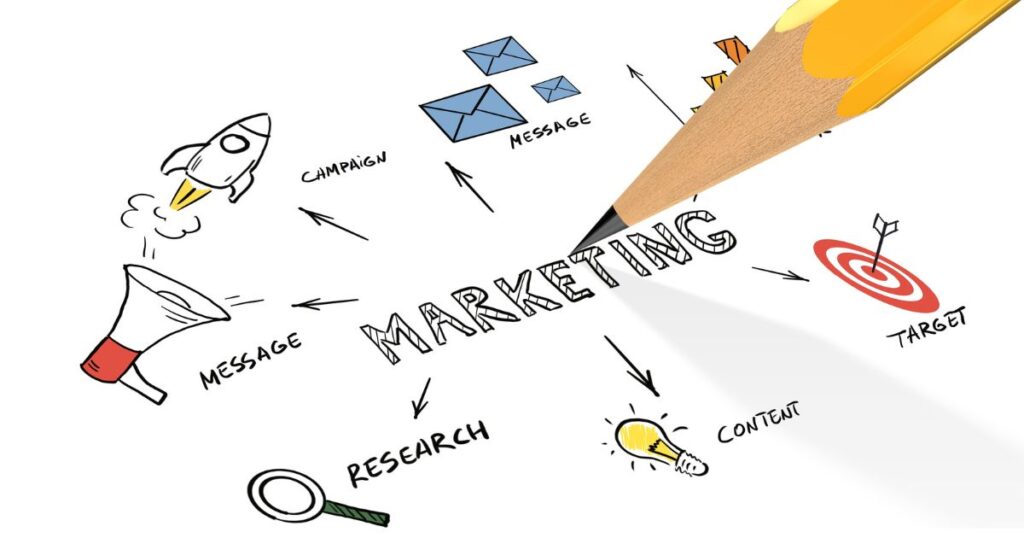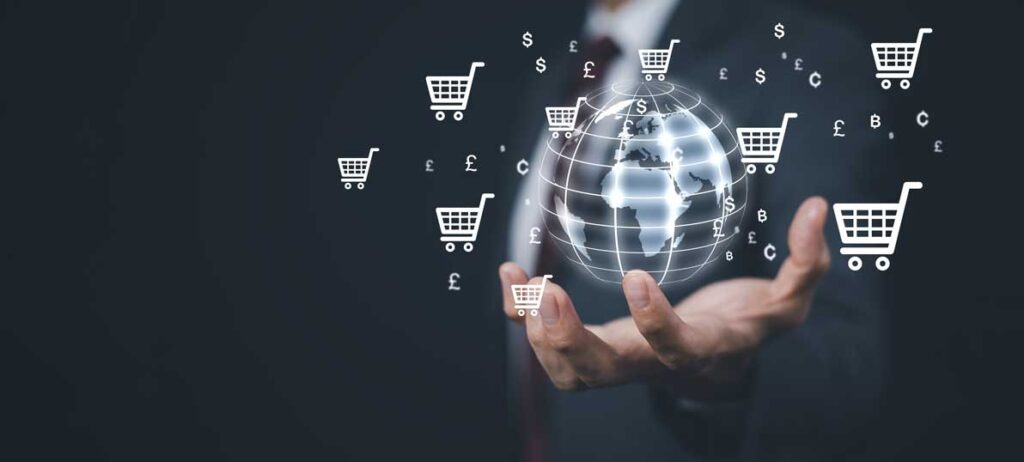Shopping was once a laborious task that could take hours. It was necessary to go from store to store to get our necessities. That took time and effort, making shopping days tiring and frustrating. The good news is that today, shopping has undergone a significant change.
Online retail became a “thing” in 1994 when the first online retail transaction occurred; the first sale was of a Sting CD on the NetMarket platform. From then on, online shopping took off, especially after developing more secure protocols for transactions, such as SSL (Secure Socket Layer) improved shoppers’ confidence in making online payments. From there, the growth of the Dot.com boom and the establishment of major online retailers took off.
Today, online shopping has revolutionized the way businesses connect with their customers. In this guide, we explore e-commerce marketing, where we will explore its definition, what an e-commerce business is, and the importance of e-commerce marketing localization.
Table of Contents
What is E-Commerce?
E-commerce stands for “electronic commerce” and refers to the process of buying and selling of goods and services on the Internet. A business may have a brick-and-stick store, but it can also have an e-commerce store. An e-commerce shop or business is the Internet version of the real-world (office, store, etc.) business.
Having both a real-world and a digital business face provides more convenience for customers to find your products and services. E-commerce is another method for businesses to sell to their customers online.
What is an E-Commerce Business?
An “e-commerce business” is short for electronic commerce business, which refers to a commercial entity that buys and sells goods and services over the Internet. All aspects of the company’s transactions are carried out electronically, including exchanging money, orders, and information. These transactions are usually done through an online platform or website.
Here are some key elements and characteristics of an e-commerce business:
Online presence: an e-commerce business usually operates through an online platform, like a website or a mobile app. The platform serves as a digital interface between the customers and the business, where customers can browse products, make purchases, and interact with the business.
Electronic transactions: when customers place orders, make payments, and receive confirmations, all of these are electronic transactions done entirely online, electronically. Most e-commerce businesses use secure payment gateways to make transactions easier and more secure to protect their and customers’ personal and financial information.
Product catalogue: an e-commerce business also showcases its products or services in an online catalog. The catalog also includes detailed descriptions, images, and pricing information to give customers the information they need to make purchasing decisions.
E-commerce businesses also include these crucial factors:
- Inventory management
- Security measures (encryption and SSL protocols)
- Digital Marketing
- Customer Relationship Management (CRM)
- Shipping & fulfillment
- Data Analytics
E-commerce businesses are more flexible to run and offer more accessibility for their customers. These factors have led to the widespread implementation of e-commerce by industries worldwide, including multinationals, and medium, and small businesses. Independent sellers also have the opportunity to reach new markets and customers around the world.
Another thing all e-commerce businesses have in common is e-commerce marketing.
What is E-Commerce Marketing?

E-commerce marketing refers to businesses’ strategies and methods to promote and sell their products and services online. E-commerce marketing aims to drive traffic to an online store or platform, convert visitors into customers, and increase sales and revenues. This multifaceted approach uses a range of digital marketing channels and methods customized to the target market/audience.
There are several crucial elements of e-commerce marketing:
Search engine optimization (SEO)
is used to optimize a website, enabling it to rank higher in the search engine results. SEO techniques are used to improve visibility, attract organic traffic, and improve the chances of appearing on the first page of the search engine results for relevant search queries. This is crucial to e-commerce marketing, especially on a global scale.
Social media marketing
this method uses social media platforms like Facebook, Instagram, Twitter, and Pinterest. This marketing technique is essential for e-commerce businesses. Companies use these channels to connect with their target audience, maintain connections with loyal customers, run promotions, and drive engagement.
Email marketing
some consider email old-fashioned; however, it remains a powerful tool for e-commerce marketing. Businesses use email campaigns to connect with customers, send product updates, share promotions, and recover abandoned carts. Personalization and market segmentation are common strategies used in e-commerce email marketing methods.
PPC (Pay-Per-Click) Advertising
involves paying for each click on an online ad. Platforms such as Google Ads and social media advertising (like Facebook Ads) allow e-commerce businesses to target specific audiences and keywords to drive traffic to their websites and platforms.
Content marketing
is creating and sharing valuable and relevant content to attract and engage the target audience. This marketing technique can include blog posts, product descriptions, videos, and other content offering information and entertaining potential customers.
Influencer marketing: many e-commerce businesses collaborate with influencers to attract customers. Influencers have a significant online following; these individuals can help e-commerce businesses reach a broader audience. Influencers promote the company’s products and services through their channels to provide social proof and credibility to the organization and its products or services.
Customer reviews & ratings are another form of social proof and credibility that online businesses use to attract new customers. Customer reviews and ratings are featured on the company’s website or platform to build trust and influence purchasing decisions.
E-commerce marketing is dynamic and continuously evolving as technology and consumer behaviour change. Successful e-commerce marketing strategies involve a holistic and adaptive approach, using a mix of tactics to create a comprehensive online presence and drive business growth.
Top E-Commerce Marketing You Should Be Targeting

E-commerce is booming and will continue to increase well into the future. The pandemic led many businesses to search for alternative ways to meet their customers’ needs, and they found the solution online.
As online shopping continues to grow, technology is fueling its development. Many consumers now shop directly from their smartphones and other mobile devices.
But if you have an e-commerce business, what markets should you target? In this section, we list the top 10 e-commerce markets that are set to boom in the next few years.
1. China
China is now the largest e-commerce market in the world. Here are some stats on what makes this country the biggest e-commerce market around:
- China had over half of the world’s e-commerce retail sales in 2021.
- The country has about 780 million Internet users, which continues to grow.
- The e-commerce market in China is set to reach over $3 trillion in 2024.
- It’s now much easier to enter the Chinese market—the country has wealthy consumers who want to buy Western goods.
2. The United States
The USA is second in the worldwide e-commerce market. Its retail sales are set to hit $5.6 billion by 2025.
The e-commerce market in this country is considered mature, which means the market may slow down in the coming years. However, the US leads the West in e-commerce retail sales.
3. The United Kingdom
The next top e-commerce market in the world is the United Kingdom. Sales are forecast to hit about $119 billion by 2025.
While the country is small, the UK does have the most advanced e-commerce market in Europe. Revenues continue to grow as online shoppers enjoy the convenience of mobile accessibility.
4. Japan
Japan is a fast-growing e-commerce market. The country’s market is set to reach $3.4 billion by 2025.
The country has a well-developed economy that attracts sellers to its urban population who take advantage of Japan’s nationwide Internet access. Moreover, products are easy to deliver, and the country is famous for its service-oriented business philosophy and advanced infrastructure.
5. South Korea
South Korea has one of the world’s largest e-commerce markets. Its e-commerce sales are expected to hit $99 billion by 2025.
This was one of the first countries to launch commercial 5G networks and is one of the world’s most technologically advanced economies. All of these benefits mean convenient online shopping for its population.
6. Germany
Next on our list of top 10 e-commerce markets is Germany. The country’s online sales are now about $85 billion.
With over 82 million high-income residents, there are plenty of potential customers ready for the ease of online shopping.
7. France
France is ranked number 7 in the world of e-commerce, with its revenue set to grow to $72 billion by 2025.
The French e-commerce market offers a broad customer base, high Internet penetration, improved mobile services and payment methods, and an efficient infrastructure. The market is more mature; however, there are still ample opportunities for businesses selling online.
8. India
India’s e-commerce market is seeing a fast increase in online sales. Its e-commerce market is set to reach $200 billion by 2026. The market’s growth is due to more residents using mobile devices and the Internet.
The most popular markets in India are personal care, beauty, and wellness products.
9. Canada
Canada is number 9 in the world of e-commerce. The country’s e-commerce market is expected to surpass $40 billion by 2024.
One of the main problems in this country is its size. It’s more challenging to quickly deliver products or services to customers while keeping costs reasonable. Canada is a large country and sparsely populated, which translates into higher shipping costs to rural areas. However, most of Canada’s population lives in large urban areas, where these issues don’t exist.
10. Spain
The last on our list of top 10 e-commerce markets is Spain. The country expects its online customers to grow to over 36 million in 2025.
Spain’s population is one of the highest users of smartphones in Europe, and this is the drive behind the boom in the country’s e-commerce market. The products that do well here are fashion and consumer electronics.
Each of these markets offers excellent opportunities for e-commerce marketing and many challenges that must be overcome. One of the main barriers to global e-commerce is the language barrier. Businesses must overcome language barriers to sell their products to international customers.
The key to overcoming language barriers is providing customers with an outstanding experience, which leads us to the next section in our guide—e-commerce localization.
The Importance of E-commerce Marketing Localization
E-commerce localization involves adapting online shopping experiences to a specific target market. Localization is taking content and adapting it to a new region. The process includes translation and adjusting the content to the target market’s cultural nuances and preferences. It’s more than a word-for-word translation. The goal is for the content to be accepted and perceived as if a native speaker had written it.
E-commerce localization involves the following:
- Content localization
- UI localization
- UX localization (including adopting payment methods, shipping options, functionalities, etc.)
- Customer service localization (support in local languages)
- Marketing localization
E-commerce localization ensures a company can reach multiple markets without cultural or language barriers. The aim is to ensure your target audience can use your e-commerce platform comfortably in their native language.
On the other hand, an unsuccessful localization project could result in customers not accepting your brand, products or services. Customers may feel you don’t understand them or their culture. In that case, they usually move on to a competitor who offers the right combination of language and cultural adaptations.
E-commerce marketing and localization are essential if your business is to succeed in global markets.
What are the Benefits of E-commerce Localization?
With a successful e-commerce localization project, your business is sure to find success. Here are the benefits of e-commerce localization:
Reach multiple markets: your content can be translated and localized to reach multiple markets simultaneously. Not only that, but it’s also more cost-effective to have it all done at once. One piece of content can be used in multiple markets, saving your business time and money.
Drive conversions: customers who feel at home while using your online shop or platform will be more likely to make purchases. This engenders trust, loyalty, and credibility, which results in keeping loyal customers and increasing sales.
FAQs
How Do You Localize Your Website or Platform?
Start by identifying your customers:
- What are their needs?
- What are their characteristics?
- Where do they live?
- What language do they speak? (Be careful—some countries have region-specific languages that must be accommodated).
- What is the demographic of the target audience?
- What are they looking for on your platform?
How Should a Business Choose Target Markets for Localization?
First, it’s essential to identify all the criteria for choosing the right target markets. The business must consider specific market factors, such as language, cultural affinity, size, and compliance issues.
How Can I Ensure Accurate Localization of Content?
It’s essential not to use free translation tools and to hire a professional translation agency. A professional translation agency like Pollion will help you with all the localization services you need for your e-commerce business to achieve a successful multinational expansion.
Concluding Thoughts
E-commerce marketing is redefining how businesses connect with their target audiences. Advances in technology and marketing strategies also continue to drive success in e-commerce.
Companies can thrive in this age of online shopping by understanding the foundations of e-commerce, embracing effective marketing strategies, and adapting to the nuances of different markets.
The future of e-commerce marketing continues to grow brightly, with many opportunities for those businesses wanting to reach new audiences on the global stage.
Read More: Should You Translate Your Brand Name?
